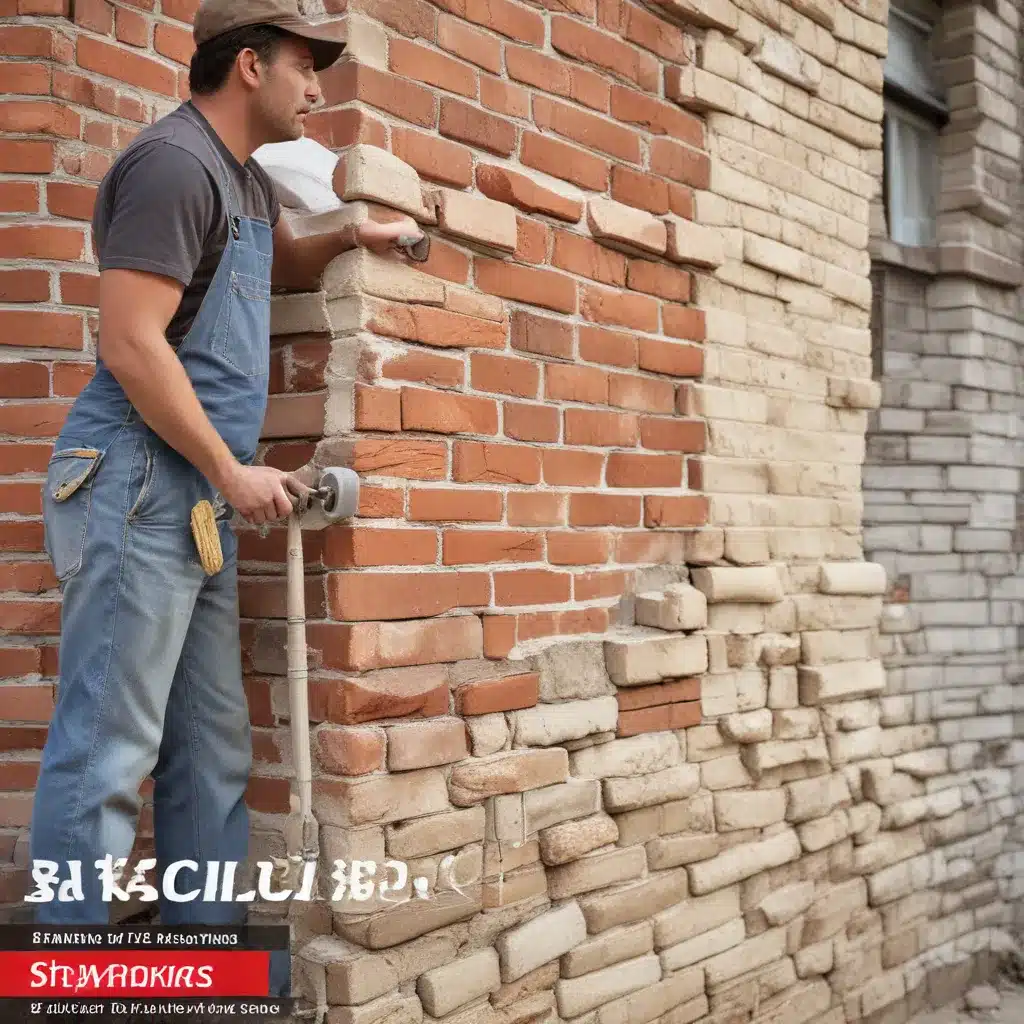
Understanding Brick, Stone, and Stucco Surfaces
As a seasoned construction professional and interior designer, I’ve had extensive experience working with various masonry materials, each with its own unique properties and maintenance requirements. Whether it’s repairing crumbling brick, reviving weathered stone, or refreshing tired stucco, mastering the art of masonry can transform the look and longevity of any home.
Let’s dive into the world of brick, stone, and stucco, exploring the best practices for restoring and maintaining these durable yet nuanced building materials.
Brick: Breathing New Life into Aging Walls
Brick is a time-honored construction material that can last for centuries, but even the most robust brick facades require periodic attention. One of the most common issues faced is mortar deterioration, leading to crumbling joints and potential water intrusion.
The process of tuckpointing, or repointing, is essential for restoring the structural integrity and weatherproofing of brick walls. This involves carefully grinding out the existing mortar to a depth of 3/4 to 1.25 inches and then refilling the joints with a historically accurate lime-based mortar. Lime mortar is softer and more permeable than modern Portland cement, allowing the historic brick to “breathe” and preventing further damage.
When it comes to cleaning brick, a gentle approach is key. Harsh chemicals or abrasive methods can easily damage the delicate surface, so it’s best to opt for a mild detergent solution and a soft-bristle brush. For stubborn stains or discoloration, a poultice-based cleaner can be an effective solution.
Stone: Reviving the Natural Elegance
Stone, with its timeless beauty and durability, is another cornerstone of masonry construction. However, like brick, stone surfaces can succumb to weathering and deterioration over time, requiring specialized care and restoration techniques.
One common issue with stone is the gradual erosion of the mortar joints, leading to instability and potential water infiltration. Tuckpointing is also essential for stone masonry, using a compatible lime-based mortar to maintain the structural integrity and breathability of the wall system.
For cleaning stone surfaces, the approach should be tailored to the specific type of stone. Gentle chemical cleaners or poultice-based treatments are often the safest options, as they can remove accumulated dirt, grime, and discoloration without compromising the natural character of the stone.
Stucco: Refreshing the Exterior with a Modern Touch
Stucco, with its smooth and versatile finish, has become a popular choice for both new construction and exterior renovations. While stucco is a durable material, it’s not immune to weathering and cracking, requiring diligent maintenance to preserve its aesthetic appeal and protective qualities.
When it comes to repairing stucco, the key is to address the underlying cause of the issue. Cracks or delamination may be a result of moisture intrusion, structural movement, or poor initial installation. A skilled masonry contractor can diagnose the problem and apply the appropriate remedies, such as applying a new scratch coat, addressing any substrate issues, or applying a flexible sealant to mitigate future cracking.
Maintaining stucco also involves regular cleaning and inspections. Gently removing dirt, debris, and any efflorescence (white, powdery deposits) can help preserve the stucco’s appearance and prevent further deterioration.
Sustainable Practices for Masonry Restoration
As the construction industry increasingly embraces sustainable practices, the restoration and maintenance of masonry surfaces have also evolved. Homeowners and contractors alike are seeking eco-friendly solutions that not only preserve the architectural integrity of a building but also minimize the environmental impact.
One of the key sustainable approaches in masonry restoration is the use of lime-based mortars instead of traditional Portland cement. Lime mortars are more permeable, allowing the masonry to “breathe” and preventing moisture-related issues. They also have a lower embodied carbon footprint compared to cement-based products.
Another sustainable strategy is the careful consideration of the appropriate cleaning and repair methods. Avoiding harsh chemicals and abrasive techniques in favor of gentler, eco-friendly solutions can significantly reduce the environmental impact of masonry restoration projects.
Hiring the Right Masonry Professionals
When it comes to masonry repair and maintenance, it’s crucial to work with experienced professionals who understand the nuances of different materials and can provide tailored solutions.
Look for masonry contractors with a proven track record in historic preservation or specialty masonry work. These experts can assess the condition of your brick, stone, or stucco surfaces, identify the underlying causes of any issues, and recommend the most appropriate remedies.
Reputable contractors should also be knowledgeable about sustainable practices, such as the use of lime-based mortars and eco-friendly cleaning methods. They can guide you through the process, ensuring that the restoration work not only enhances the aesthetics of your home but also contributes to its long-term durability and environmental responsibility.
Remember, investing in professional masonry services may cost more upfront, but it can pay dividends in the long run by preserving the integrity of your home’s exterior and reducing the need for frequent, costly repairs.
Conclusion: Embracing the Art of Masonry Maintenance
Mastering the art of masonry restoration and maintenance is an essential skill for homeowners and construction professionals alike. By understanding the unique properties and care requirements of brick, stone, and stucco, you can breathe new life into aging surfaces, enhance the overall aesthetic of your home, and ensure its long-term resilience.
Whether you’re tackling a historic brick façade, reviving a weathered stone entryway, or refreshing a stucco-clad exterior, embracing sustainable practices and working with skilled masonry experts can transform your property and contribute to a more eco-conscious built environment.
Remember, the key to maintaining masonry surfaces is regular inspection, prompt attention to any issues, and a commitment to using the right materials and techniques. By mastering the art of masonry, you’ll not only preserve the beauty and integrity of your home but also create a living legacy for generations to come.
For more information on masonry restoration, sustainable building practices, and professional services, be sure to visit https://localbuilderlondon.co.uk/. Our team of experienced construction and design professionals is here to guide you through every step of your masonry project.


